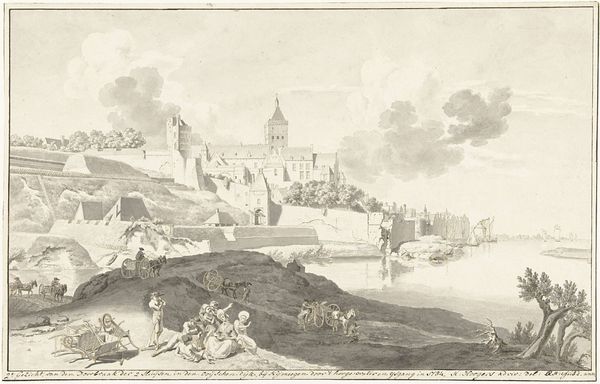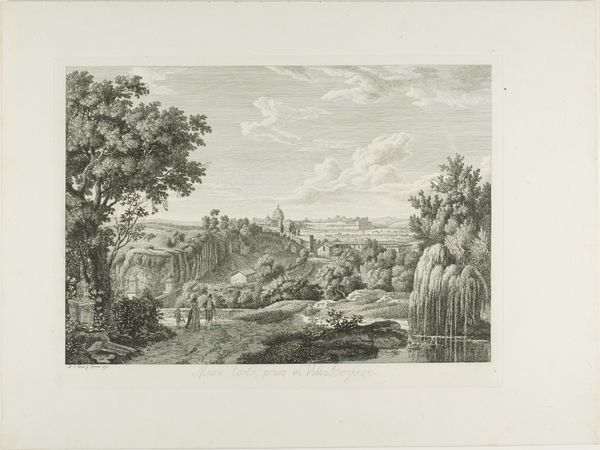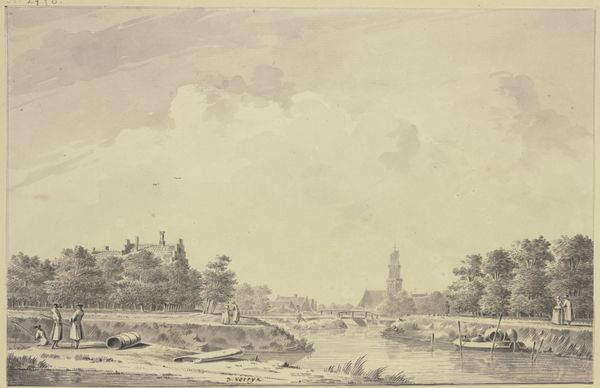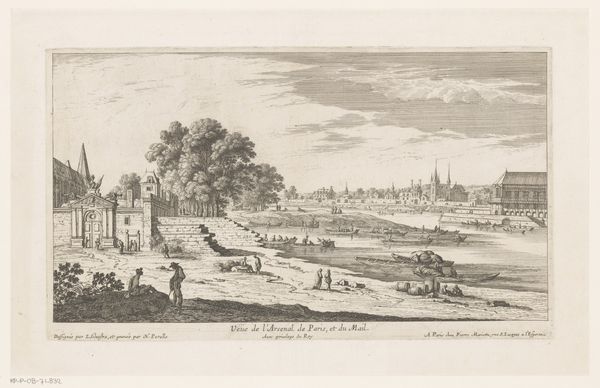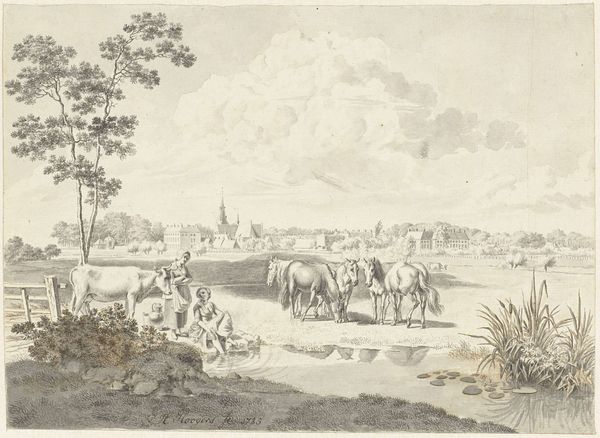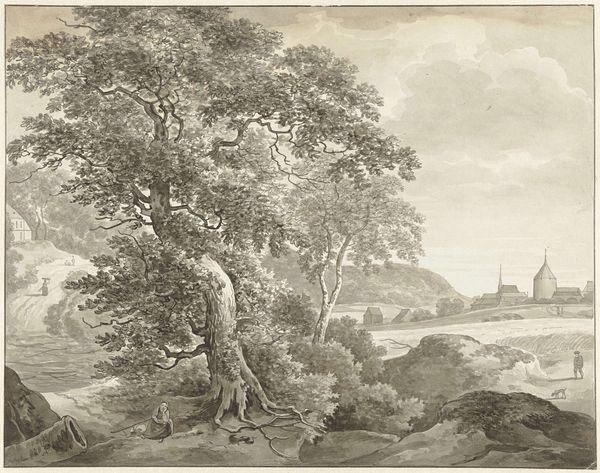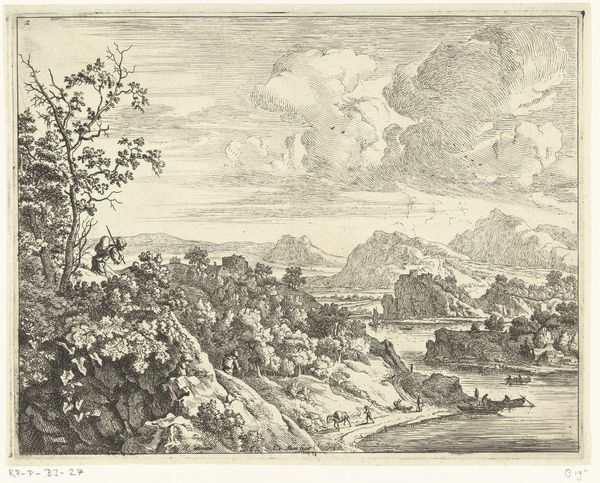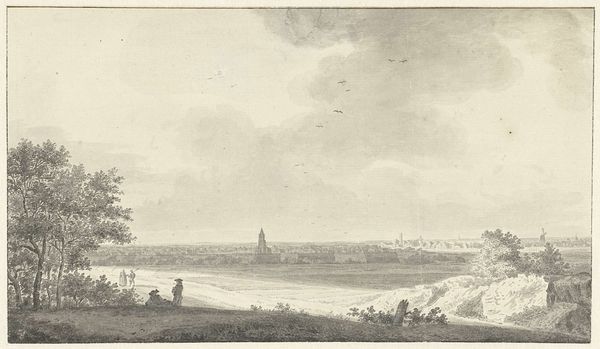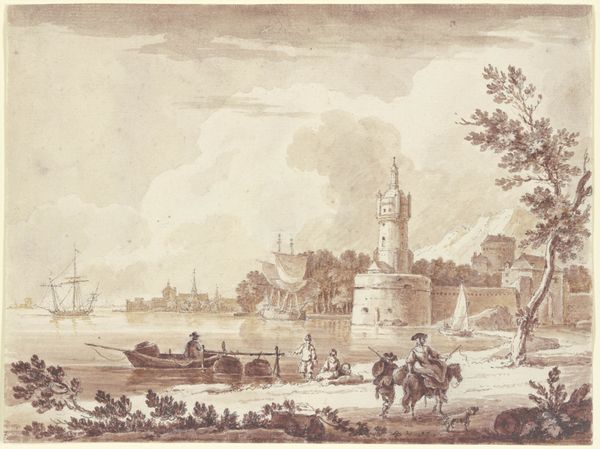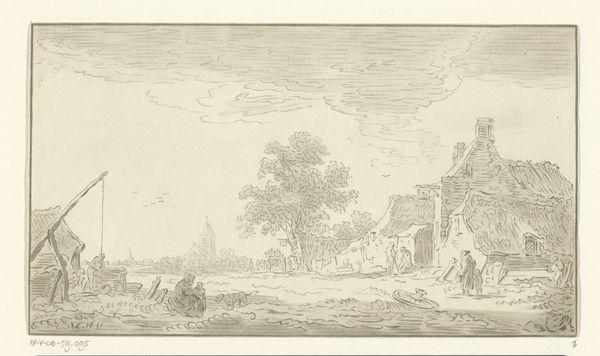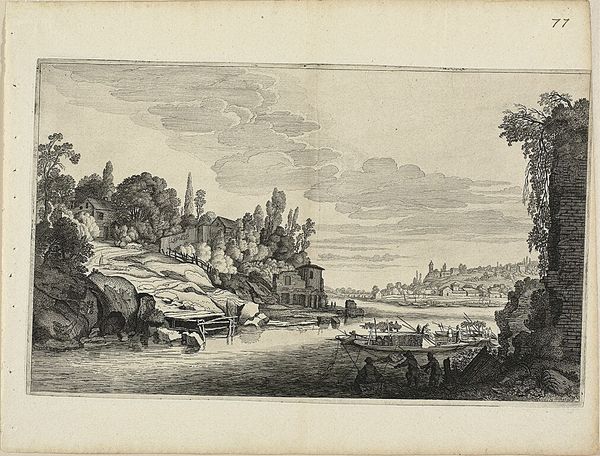
drawing, paper, ink, pen
#
drawing
#
pen sketch
#
pencil sketch
#
landscape
#
paper
#
ink
#
pen
#
cityscape
#
genre-painting
#
realism
Dimensions: height 200 mm, width 270 mm
Copyright: Rijks Museum: Open Domain
Curator: This drawing is entitled “Gezicht op Rhenen,” or "View of Rhenen." Hendrik Hoogers completed this pen and ink work on paper in 1802. It is currently housed in the Rijksmuseum. Editor: It's lovely. Serene. There's something so peaceful about the light and the meticulous details. It gives the impression of a calm afternoon. Curator: It’s a scene of leisure and everyday life. We see figures fishing, resting along the bank, cattle grazing in the background—all under the watch of the Sint-Cunera church dominating the city's skyline. Consider the social implications—who is allowed leisure, who has access to the land? Are those laborers among the resting figures? Editor: Yes, the social commentary adds an important layer. But structurally, the use of line and wash directs our eye through the composition. The layering of tones creates a subtle depth that really emphasizes the grandeur of the church tower and also the reflective nature of the river. Curator: Hoogers composed the view during a tumultuous time in Dutch history. Following the Batavian Revolution in 1795, the old order was dismantled, leading to a shift in societal values and identities. This is reflected in the focus on quotidian activities, and the placement of citizens in relationship to nature as a democratic move from classical representations of power, privilege and authority. Editor: Agreed, and the contrast between the soft, atmospheric perspective of the town and the sharpness of the foreground is particularly captivating. Look at how the dark inks define the trees and the figures in the front. It’s all in these carefully calculated gradations and textural variation. Curator: These carefully considered choices present the town as less of a locus of commerce and politics, and instead draw our eyes to an emerging middle class, even, perhaps, a national identity tied to a specific time, a particular place, but not one fixed in old hierarchies of identity. Editor: Indeed, its visual harmony allows viewers to experience a quiet sense of unity, wouldn’t you agree? Curator: Definitely. Hoogers encourages a sort of calm observation, not unlike his own careful study in capturing the nuances of both the scenery and shifting values. Editor: The piece overall is a striking composition through calculated arrangement, and light creating both harmony and rhythm across the scene.
Comments
No comments
Be the first to comment and join the conversation on the ultimate creative platform.

